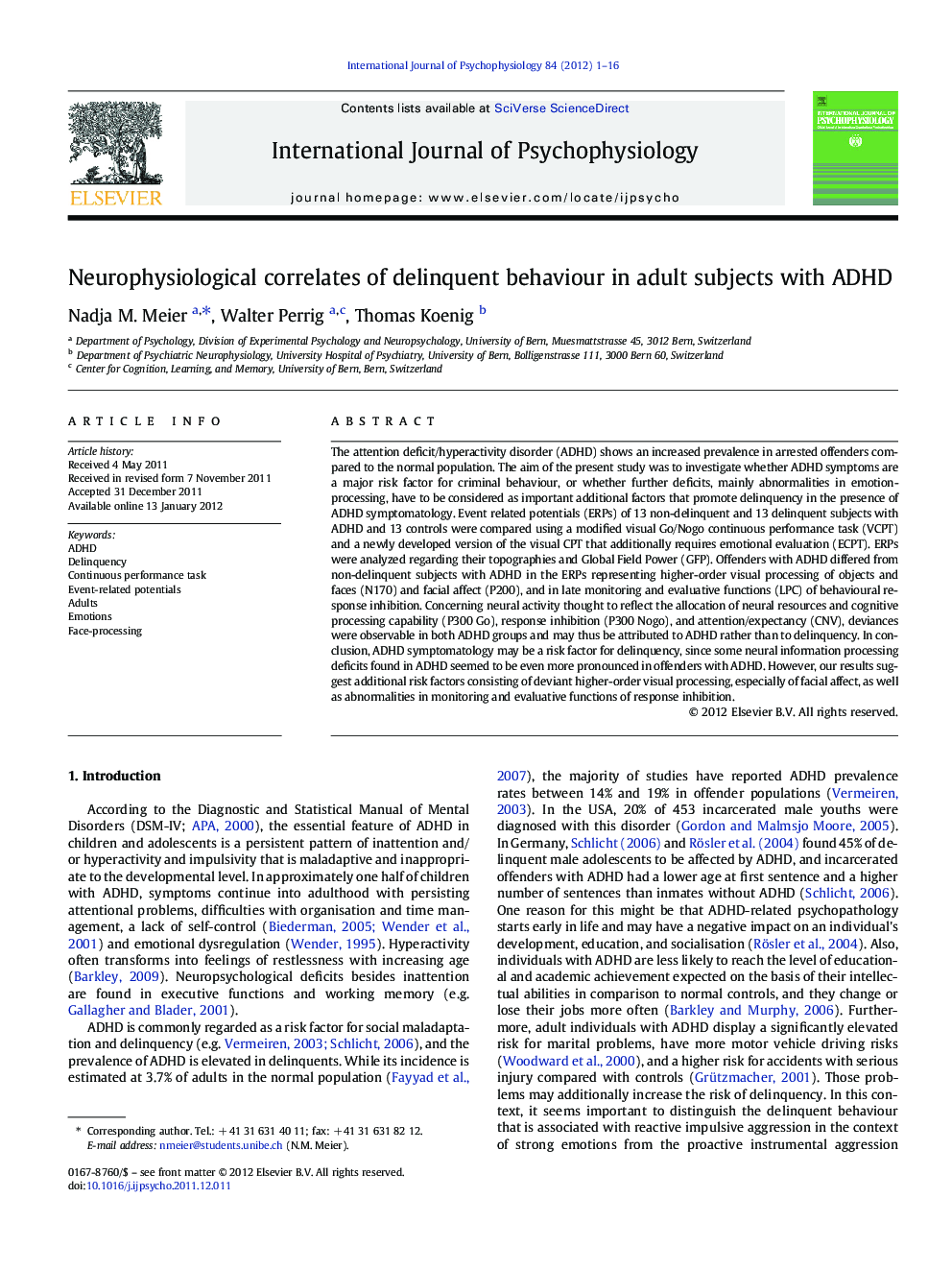| Article ID | Journal | Published Year | Pages | File Type |
|---|---|---|---|---|
| 930346 | International Journal of Psychophysiology | 2012 | 16 Pages |
The attention deficit/hyperactivity disorder (ADHD) shows an increased prevalence in arrested offenders compared to the normal population. The aim of the present study was to investigate whether ADHD symptoms are a major risk factor for criminal behaviour, or whether further deficits, mainly abnormalities in emotion-processing, have to be considered as important additional factors that promote delinquency in the presence of ADHD symptomatology. Event related potentials (ERPs) of 13 non-delinquent and 13 delinquent subjects with ADHD and 13 controls were compared using a modified visual Go/Nogo continuous performance task (VCPT) and a newly developed version of the visual CPT that additionally requires emotional evaluation (ECPT). ERPs were analyzed regarding their topographies and Global Field Power (GFP). Offenders with ADHD differed from non-delinquent subjects with ADHD in the ERPs representing higher-order visual processing of objects and faces (N170) and facial affect (P200), and in late monitoring and evaluative functions (LPC) of behavioural response inhibition. Concerning neural activity thought to reflect the allocation of neural resources and cognitive processing capability (P300 Go), response inhibition (P300 Nogo), and attention/expectancy (CNV), deviances were observable in both ADHD groups and may thus be attributed to ADHD rather than to delinquency. In conclusion, ADHD symptomatology may be a risk factor for delinquency, since some neural information processing deficits found in ADHD seemed to be even more pronounced in offenders with ADHD. However, our results suggest additional risk factors consisting of deviant higher-order visual processing, especially of facial affect, as well as abnormalities in monitoring and evaluative functions of response inhibition.
► We are looking for neurophysiological risk-factors for delinquency. ► We compare event-related potentials between delinquent and non-delinquent ADHD subjects. ► We analyze microstates and global field power. ► The comparison reveals differences in higher-order visual processing of facial affect. ► Further differences are found in the monitoring/evaluation of response inhibition.
